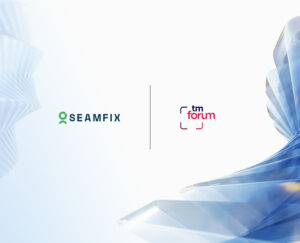Role Based vs. Attribute Based vs. Policy Based Access Control
Imagine you’re running a theme park. You’ve got different zones—kiddie rides, thrill rides, and VIP lounges. Now, you need to decide who gets access to which areas. Do you give everyone a wristband based on their age (Role-Based Access Control) as part of your role-based-vs-attribute-based-vs-policy-based-access-control strategy? Do you check multiple factors like height, ticket type, and time of day (Attribute-Based Access Control) to add more flexibility? Or do you create a set of rules that combine both (Policy-Based Access Control) for a more comprehensive approach? Each method has its pros and cons, and choosing the right one depends on your needs.
In the digital world, managing access to systems and data works the same way. There are three main approaches: Role-Based Access Control (RBAC), Attribute-Based Access Control (ABAC), and Policy-Based Access Control (PBAC). In this blog, we’ll break down the differences between these methods, explore their strengths and weaknesses, and show you how solutions like Seamfix iAM can help you implement the right approach for your organization. Welcome to the ultimate guide on role-based-vs-attribute-based-vs-policy-based-access-control.
What is Role-Based Access Control (RBAC)?
Let’s start with the simplest approach: Role-Based Access Control (RBAC). RBAC assigns permissions based on roles within an organization. For example:
- A “Manager” role might have access to financial data.
- A “Developer” role might have access to code repositories.
- An “Intern” role might have limited access to basic tools.
Think of RBAC as a set of keys. Each role has a specific set of keys that unlock certain doors. It’s straightforward, easy to manage, and works well for organizations with clear, well-defined roles.
When to Use RBAC:
- Your organization has clear, static roles.
- You need a simple, easy-to-manage access control system.
- Compliance requirements are based on job functions.
What is Attribute-Based Access Control (ABAC)?
Now, let’s step it up a notch with Attribute-Based Access Control (ABAC). ABAC takes a more granular approach by considering multiple attributes to make access decisions. These attributes can include:
- User Attributes: Job title, department, location.
- Resource Attributes: File type, sensitivity level.
- Environmental Attributes: Time of day, location of access.
For example, with ABAC, you could create a rule that says, “Managers in the Finance department can access budget files only during business hours from the office network.”
Think of ABAC as a bouncer who doesn’t just check your ID but also looks at what you’re wearing, whether you’re on the guest list, and if it’s the right time for entry.
When to Use ABAC:
- Your organization has complex, dynamic access needs.
- You need fine-tuned control over who can access what.
- Compliance requirements are based on multiple factors.
What is Policy-Based Access Control (PBAC)?
Finally, let’s talk about Policy-Based Access Control (PBAC). PBAC combines the best of both worlds by using policies to define access rules. These policies can include roles, attributes, and other factors. For example, a PBAC policy might say, “Only users with the ‘Manager’ role and a security clearance of ‘Top Secret’ can access classified documents.”
Think of PBAC as a rulebook that combines the simplicity of RBAC with the flexibility of ABAC.
When to Use PBAC:
- Your organization needs a flexible, scalable access control system.
- You want to combine roles and attributes in your access decisions.
- Compliance requirements are complex and require detailed policies.
RBAC vs. ABAC vs. PBAC: A Quick Comparison
| Feature | RBAC | ABAC | PBAC |
|---|---|---|---|
| Basis for Access | Roles | Attributes | Policies (combining roles and attributes) |
| Granularity | Low | High | Medium to High |
| Flexibility | Low | High | High |
| Ease of Management | Easy | Complex | Moderate |
| Best For | Simple, static environments | Complex, dynamic environments | Flexible, scalable environments |
Real-World Use Cases
Still not sure which approach is right for you? Here are some real-world examples:
1. RBAC in Action
A small business with clear roles (e.g., Admin, Employee, Intern) uses RBAC to manage access to its systems. It’s simple, easy to manage, and meets their needs.
2. ABAC in Action
A healthcare organization uses ABAC to ensure that only doctors and nurses can access patient records during their shifts. It’s granular, flexible, and meets strict compliance requirements.
3. PBAC in Action
A government agency uses PBAC to combine roles and attributes in its access policies. For example, “Only users with the ‘Analyst’ role and a security clearance of ‘Top Secret’ can access classified documents.” It’s flexible, scalable, and meets complex compliance requirements.
How Seamfix iAM Can Help
Now, let’s talk about how Seamfix iAM can help. Seamfix iAM is a modern IAM solution that supports RBAC, ABAC, and PBAC, giving you the flexibility to choose the right approach for your organization. Here’s why it’s a great choice:
- User-Friendly: Seamfix iAM is designed with the end-user in mind. It’s easy to set up and use, even for non-tech-savvy employees.
- Flexible: Whether you need RBAC, ABAC, or PBAC, Seamfix iAM can scale to meet your needs.
- Secure: With features like Multi-Factor Authentication (MFA) and encryption, Seamfix iAM ensures that your data stays secure.
- Comprehensive: Seamfix iAM supports a wide range of access control methods, giving you the flexibility to choose the right approach for your organization.
For example, imagine you’re managing access to sensitive financial data. With Seamfix iAM, you can create a policy that says, “Only Finance managers can access budget files from company-issued laptops during business hours.” It’s access control made simple.
Tips for Choosing the Right Approach
Here are some tips to help you choose the right access control method for your organization:
- Assess Your Needs: Identify your organization’s specific access control needs and goals.
- Involve Key Stakeholders: Get input from IT, HR, and other relevant teams to ensure everyone’s needs are met.
- Start Small: Begin with a pilot program to test the system and gather feedback.
- Monitor and Optimize: Keep an eye on how the system is performing and make adjustments as needed.
Final Thoughts
Choosing the right access control method—whether it’s RBAC, ABAC, or PBAC—depends on your organization’s specific needs. Each approach has its strengths and weaknesses, and the right choice can make all the difference in keeping your systems secure and your team productive.
And with solutions like Seamfix iAM, implementing the right access control method has never been easier. It’s designed to make the process seamless, scalable, and user-friendly—so you can focus on what really matters: running your business.
So, what are you waiting for? Take the first step toward better access control by exploring how Seamfix iAM can help.
Ready to learn more? Check out Seamfix iAM and its access control capabilities here.






